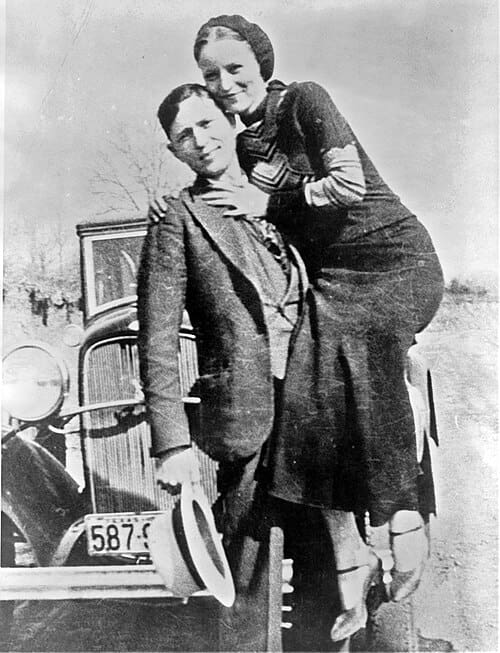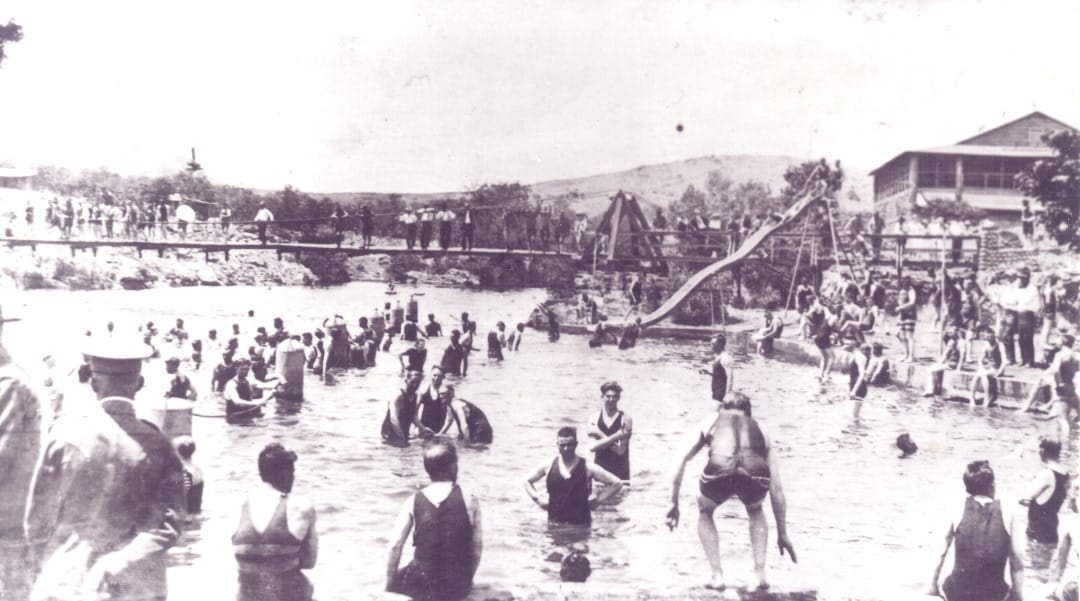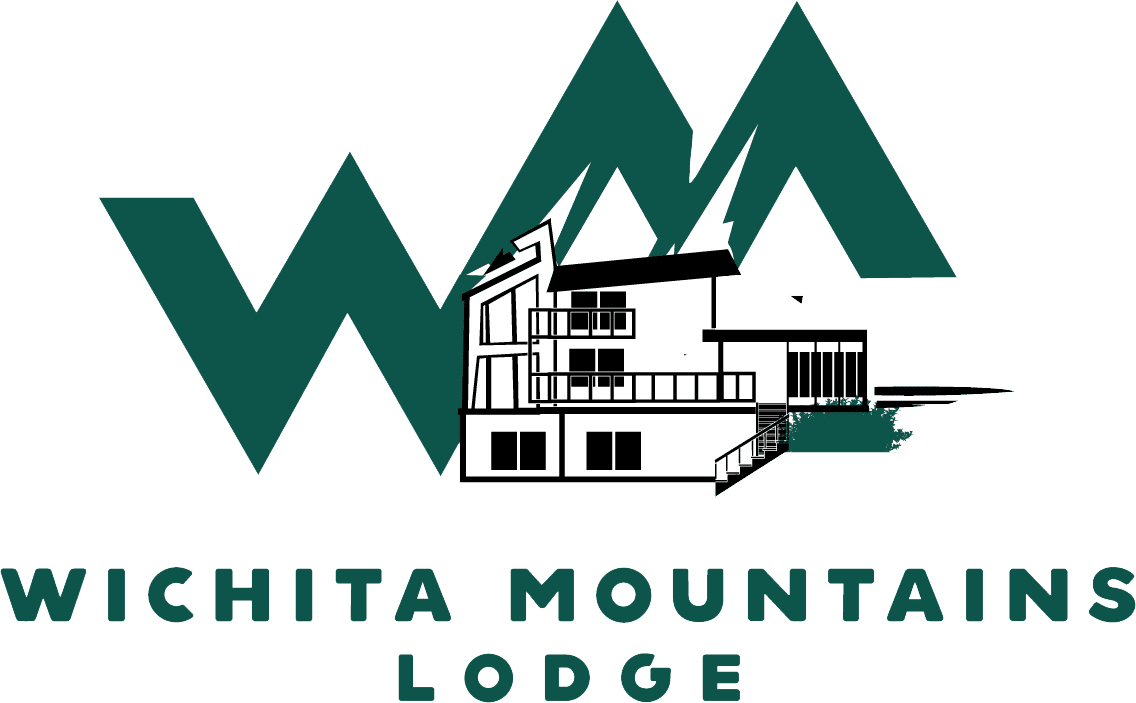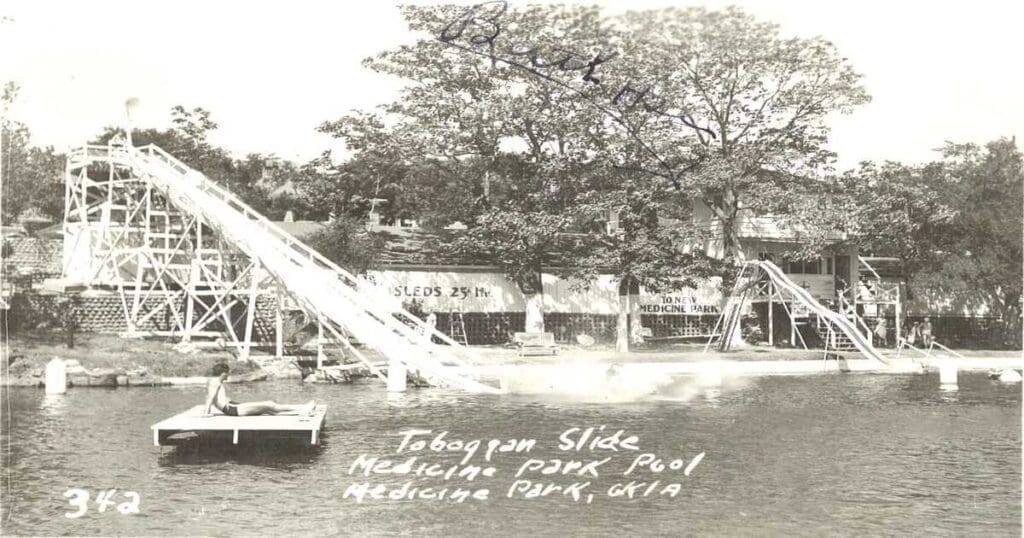Medicine Park, Oklahoma, founded in 1908 as the state’s first resort town, quickly transformed from a scenic getaway into a clandestine retreat for bootleggers and notorious criminals during the Prohibition era.
Bootleggers & Gambling Behind Cobblestone Facades
Under the restrictions of the Volstead Act (enacted January 17, 1920), illicit alcohol became a lucrative underground enterprise. Medicine Park’s cobblestone inns weren’t just tourist attractions they concealed speakeasies, hidden trapdoors, slot machines, and whiskey flowed freely in the 1920s.
Medicine Park was more than a local retreat; it drew a high-profile crowd. Al Capone reportedly frequented the area during the ’20s as part of his bootlegging operations. Other infamous figures included Bonnie and Clyde, Pretty Boy Floyd, and Jack Abernathy—their presence cemented the town’s dual reputation as both resort and rendezvous for outlaws.

Oklahoma’s Own Outlaw Gangs
While Medicine Park was not a gang territory, broader Oklahoma saw violent criminal enterprises, such as the Kimes–Terrill Gang. Active in 1926–27, they orchestrated bank robberies and dramatic jailbreaks in the region. Medicine Park served as a respite for figures with such connections.
Corrupt Agents & Lawless Hideouts
Oklahoma’s law enforcement during this era was often compromised. Wiley Lynn, a prohibition agent appointed to Cromwell (not far from Medicine Park), was deeply corrupt. His murky dealings and involvement in the murder of folk hero Bill Tilghman exemplify the chaos surrounding Prohibition. This illustrates how even agents could play dual roles, both suppressing crime publicly and facilitating it privately.
A Resort with a Secret Identity
Medicine Park’s transformation into a speakeasy haven relied on its natural beauty and cobblestone charm. Tourists, soldiers from nearby Fort Sill, and high rollers from across the region mingled openly even as bootleggers, gamblers, and criminals slipped unseen into backrooms and side-streets.
Legacy of the Roaring ’20s
Though Prohibition ended with the Twenty-first Amendment (repealed December 5, 1933), Medicine Park’s wild twenties reputation endures. Today’s visitors stroll the same cobblestone walkways that once echoed with the clatter of slot machines and whispered deals, an intriguing relic of America’s most lawless decade.

Final Thoughts
Medicine Park’s unique blend of natural beauty and secretive nightlife during Prohibition offers a vivid chapter in Oklahoma’s history. It stood at the crossroads of respectable tourism and outlaw refuge, shaped by national alcohol bans, notorious personalities, and regional criminal networks.

